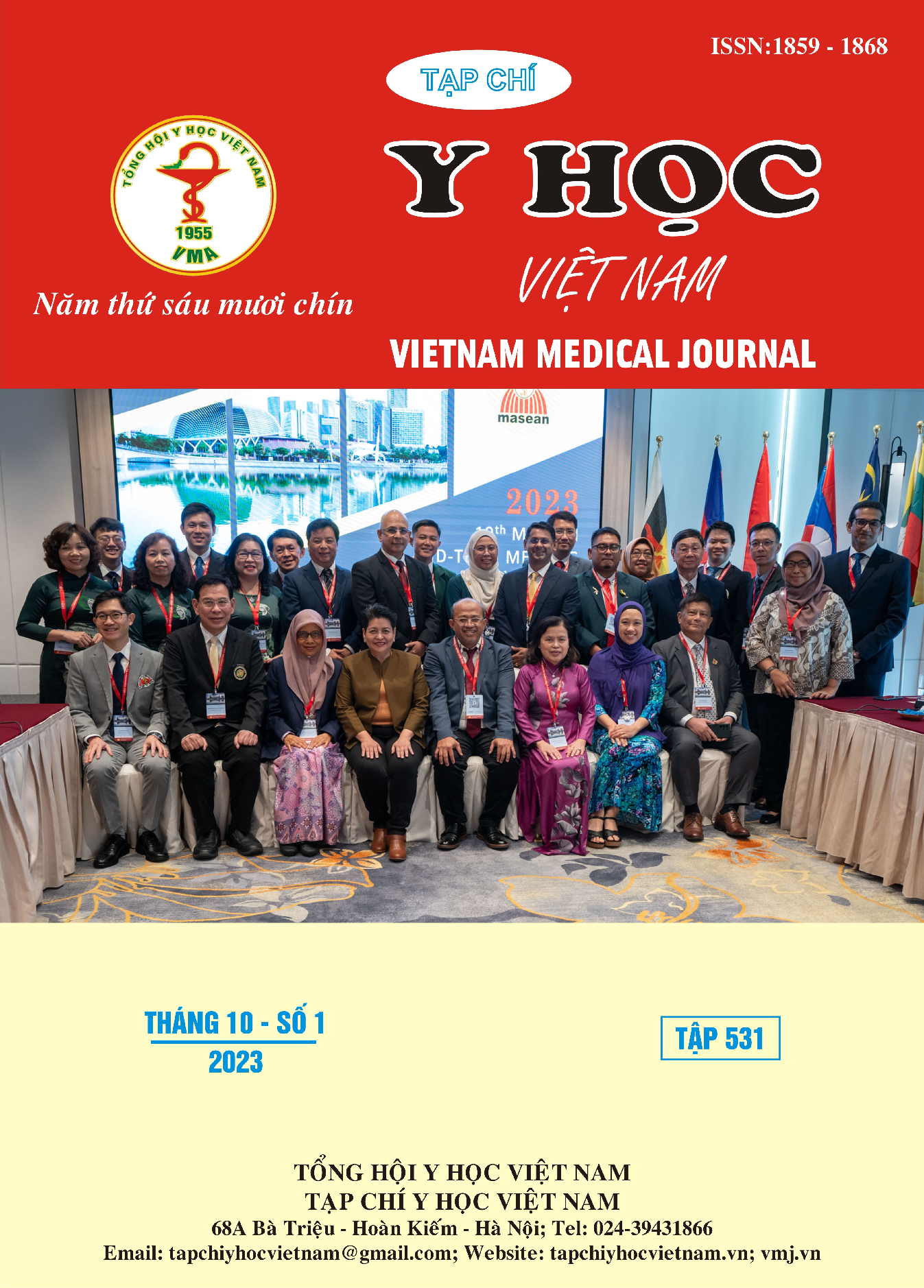EVALUATING THE CHANGE OF LOWER LEG COMPARTMENTS PRESSURE IN ATHLETES
Main Article Content
Abstract
Background: Chronic compartment syndrome is the second most common cause of leg pain on exertion with prevalence ranging from 27 to 33% with the characteristic feature of increased compartment pressure. Sports activities including athletics is one of the risk factors for chronic compartment syndrome of the lower leg. Objectives: To evaluate the change of compartment pressure index in groups of athletes before and after training. Subjects and methods: Study on 70 athletes at the Military Sports Center, the compartment pressure was measured based on the oscillometric principle using a Compass™ Compartment Pressure by Mirado Biomedical at 4 time points before exercise, 1 minute, 5 minutes, and 10 minutes after exercise. Results: The results of our study showed that the pressure difference in the deep anterior and posterior compartments in the legs was not too great (1-3mmHg). The pressure in the space after 1 minute of exercise in this group of athletes increased quite high, especially in the deep right posterior compartment (24.09 ± 5.03 mmHg). Cavity pressure increased after 1 minute of exercise, gradually decreased at the measurements after 1 minute, 5 minutes, and 10 minutes in all compartments with statistically significant differences. Conclusion: A study of 70 athletes showed that there was an increase in pressure in the anterior and posterior deep compartments in athletes, which peaked after 1 minute of exercise and decreased over time.
Article Details
Keywords
compartment pressure; lower leg compartment; athletics.
References
2. Gross, C.E., et al., Chronic exertional compartment syndrome of the superficial posterior compartment: Soleus syndrome. 2015. 49(5): p. 573-576.
3. Chandwani, D. and M. Varacallo, Exertional compartment syndrome, in StatPearls [Internet]. 2021, StatPearls Publishing.
4. de Bruijn, J.A., et al., Lower leg chronic exertional compartment syndrome in patients 50 years of age and older. 2018. 6(3): p. 2325967118757179.
5. Fouasson-Chailloux, A., et al., Determination of the predictive clinical parameters to diagnose chronic exertional compartment syndrome. 2018. 18(2): p. 279-285.
6. Vignaud, E., et al., A Comparison of Two Models Predicting the Presence of Chronic Exertional Compartment Syndrome. 2021. 42(11): p. 1027-1034.
7. Pedowitz, R.A., et al., Modified criteria for the objective diagnosis of chronic compartment syndrome of the leg. The American journal of sports medicine, 1990. 18(1): p. 35-40.
8. Tucker, A.K.J.C.r.i.m.m., Chronic exertional compartment syndrome of the leg. 2010. 3(1): p. 32-37.


